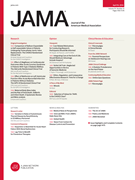
A new JAMA study on discontinued randomized trials in Switzerland, Germany and Canada, reports that poor recruitment accounts for 101 out of 253 trials that were eventually discontinued (or about 10% of the 1017 trials which participated in the study). When restricted to industry-sponsored trials with non-healthy volunteers, poor recruitment accounted for the discontinuation of 40 trials out of 119 that were discontinued. Across the board, poor recruitment was the foremost cause of trial discontinuity.
Unfortunately, difficulties with recruitment and enrollment are well-established in the field. In the United States, 50% of trial sites enroll one or fewer patients, and nearly 80% fail to meet enrollment deadlines. These numbers subsist despite an average establishment cost of $70,000 per site.
However, an important revelation of this study is that clinical trials which aim at smaller sample sizes are more likely to discontinue due to poor recruitment. In other words, adaptive designs that allow for sample size re-estimation can potentially propel many struggling trials towards successful completion.
Adaptive designs for sample size re-estimation, combined with accurate predictions for recruitment, can improve trial design and feasibility studies. These functionalities are available in East 6.3's Adapt, SurvAdapt and Predict modules. In addition, East 6.2 and East 6.3 provide high quality simulation tools that can prepare sponsors for a variety of potential difficulties that can assail a trial prior to its completion.

Related Items of Interest
To view the paper cited in this post, click below:
Kasenda B, von Elm E, You J, et al. "Prevalence, Characteristics, and Publication of Discontinued Randomized Trials." JAMA. 2014;311(10):1045-1052. (This article is available to all).
From Cytel's Leadership Team
Nitin Patel, Pralay Senchaudhuri and Suresh Ankolekar (2012). "Better Planning through Design: Forecasting Enrollment in Clinical Trials When Site-Level Accural Rates Vary with Time." (Slides Available to All.)
Yannis Jemiai (2012). "Better Planning through Design: Modeling and Forecast Enrollment and Event Arrivals to Optimize Trial Execution." (Slides Avialable to All.)



